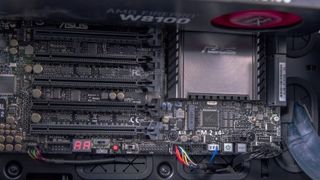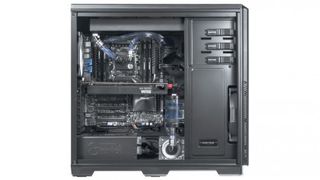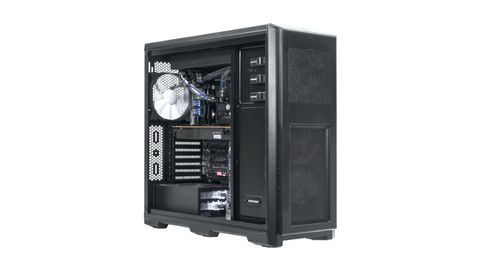Why you can trust TechRadar
Warranty and support
When risk-averse IT managers makes purchasing decisions, independent workstation vendors are less of a safe bet than larger, global workstation manufacturers. Being smaller fry in a giant corporate pond is a turn off.
To counter this inherent disadvantage, independent vendors offer a more specialised service. You won't find the Dells or HPs of this world selling water-cooled systems, you get a bit more control over the exact specification, and the warranty at least has to match the big boys.
As with a few other aspects of its RENDA brand, Overclockers is trying to go one better than its competitors, probably because it's so new to the market. A five-year warranty, rather than the typical three is on offer, with the first three years as collect and return, although as of writing Overclockers is not offering on-site engineers.

Performance
I ran all the usual standard TechRadar Pro benchmarks on the PW-E7F, along with some tests more suitable for workstations.
The standard benchmark results were as follows:
- 3DMark: Fire Strike: 7668; Sky Diver: 26582; Cloud Gate: 37119; Ice Storm: 190316
- Cinebench 15: CPU: 1717 points; Graphics: 191.07 fps
- PCMark 8 (Home Test): 4967
- PCMark 8 (Accelerated): 5575
Cinebench 15 is equally effective for testing gaming PCs and business machines, and is a superb early show for the RENDA. 1717 points in the CPU test reflects both the high clock speed and the eight cores of the Core i7-5960x.
The OpenGL test gave a similarly great result, hitting 191.07 fps. That's a brilliant score, which reflects how the graphics card has a bit of extra headroom when paired with a processor running at 4.3GHz. These are some of the best scores I've recorded from a workstation.
The 3DMark results show equally good performance, but being weighted towards gaming, aren't particularly worth paying too much attention to.
It's SPECviewperf 12 which really demonstrates the strength of a powerful workstation such as the PW-E7F. In these tests, AMD FirePro cards tend to fare better in the Maya-04 section, while Nvidia Quadro cards have traditionally done better in the other sections, although this has recently changed with Nvidia's brand new top-end Quadro M6000 graphics card delivering a serious boost to this aspect of performance. This is worth noting for Maya users.

The PW-E7F scored 78.65 in Maya-04, where a similar workstation with an Nvidia Quadro K5200 managed 64.72. In the Catia-01 section though, AMD's W8100 falls behind a bit with 64.96 recorded by the PW-E7F compared with 87.99 from that same Quadro-powered system.
A final test is Luxmark, an OpenCL-based ray-tracing benchmark, which is a great indicator of compute rendering performance. The RENDA PW-E7F managed a score of 1193 in the Room GPU test, with 23832 in the Sala test and 18500 in the Luxball HDR test.
These figures compare really well with other high-end workstations. The combination of an overclocked Core i7-5960x and high-end GPU pushes performance way ahead of the vast majority of Xeon-based workstations, with a high clock speed, eight processor cores to handle multi-threaded tasks and great OpenCL performance.

